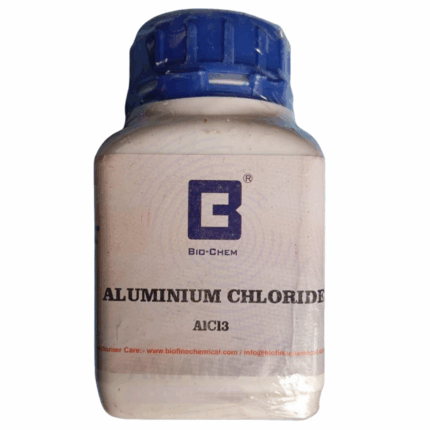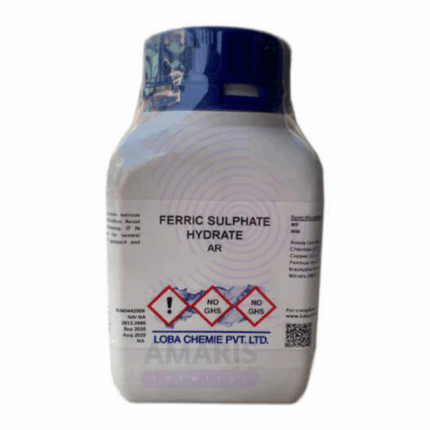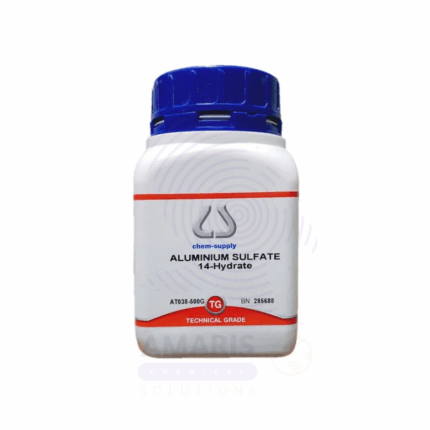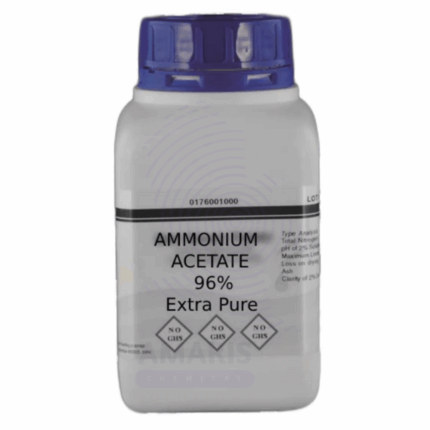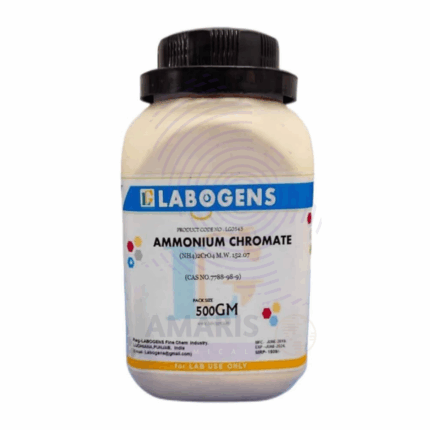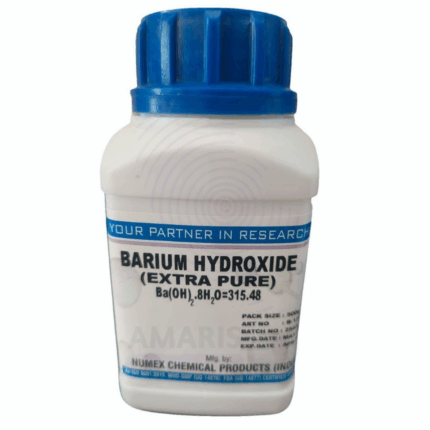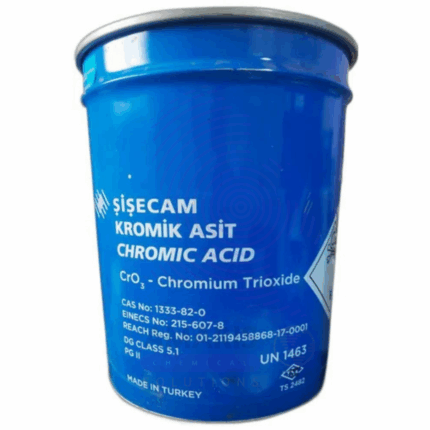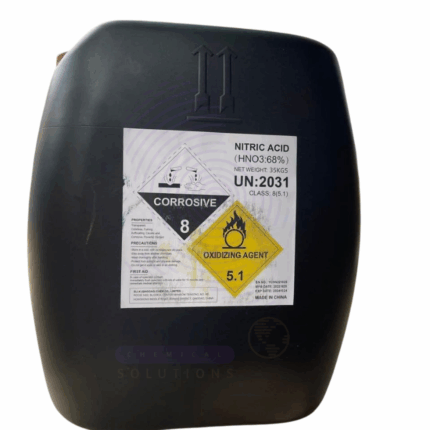
Ammonium Lactate Extra Pure
$ 18.00 Original price was: $ 18.00.$ 17.89Current price is: $ 17.89.
Ammonium Lactate Extra Pure is a high-purity, white to off-white crystalline or powdery compound formed from lactic acid and ammonium hydroxide, commonly used in laboratory settings for biochemical, pharmaceutical, and analytical applications. It serves as a buffering agent, a mild acidifier, and a source of both lactate and ammonium ions in solution. In biochemical research, it is used in studies involving metabolic pathways, pH-controlled reactions, and cell culture media. Its extra pure grade ensures minimal contamination, making it suitable for sensitive analytical techniques and formulation development. To maintain stability and prevent moisture absorption, it should be stored in tightly sealed containers in a cool, dry environment.
Ammonium Lactate Extra Pure
Primary Uses
- Buffering Agent in Biochemistry and Cell Culture
- Used as a mild buffer for maintaining near-neutral pH in sensitive biological experiments, especially in low-ionic strength environments.
- Source of Lactate Ions in Metabolic Studies
- Provides lactic acid conjugate base in experiments modeling anaerobic metabolism and cellular respiration.
- Nutrient Additive in Microbial Culture Media
- Acts as a carbon source for certain bacteria or fungi in microbiology and fermentation experiments.
- Reagent in Food Chemistry and Cosmetic Science Research
- Studied in lab-scale modeling of preservative behavior, pH adjustment, and skin compatibility tests.
- Chelating Agent in Inorganic Studies
- The lactate ion can act as a mild chelator, useful in solubilizing metal ions like calcium, magnesium, or iron.
Secondary Uses
- Simulation of Biological Fluids or Fermentation Byproducts
- Used in modeling sweat, wound fluid, or spoilage products in lab-based degradation or stability studies.
- Redox and Acid–Base Studies in Educational Labs
- Demonstrates weak acid–weak base salt behavior, suitable for titration or hydrolysis experiments.
- Solubilizer in Experimental Drug Delivery Systems
- Investigated as a vehicle for solubilizing APIs or test compounds in pharmacokinetic simulations.
- pH Adjustment in Gel or Polymer Systems
- Occasionally used in forming hydrogels or buffers for controlled-release materials in laboratory tests.
- Precursor for Organically Modified Lactate Complexes
- Used in the synthesis of metal lactate salts (e.g., iron or zinc lactates) in coordination and nutritional chemistry studies.
| PACK SIZE |
500 grams Plastic Tin |
|---|
1. Basic Identification Attributes
- Chemical Name: Ammonium Lactate
- CAS Number: 515-98-0
- HS Code: 29181100 (Lactic acid, its salts and esters)
- Molecular Formula: C₃H₉NO₃ (NH₄⁺ + C₃H₅O₃⁻)
- Synonyms:
- Lactic acid ammonium salt
- Ammonium 2-hydroxypropanoate
- 2-Hydroxypropanoic acid, ammonium salt
- Ammonium alpha-hydroxypropionate
2. Physical & Chemical Properties
- Physical State: Solid (hygroscopic crystals) or aqueous solution (common form)
- Color & Odor: White to off-white crystals or clear solution; mild odor
- Boiling Point: Decomposes before boiling (solution may boil near 100°C)
- Melting Point: ~75–80°C (for solid form)
- Density/Specific Gravity:
- ~1.07 g/cm³ (50% aqueous solution)
- Solubility:
- Water: Freely soluble
- Alcohol: Soluble
- pH Level: ~6.0–7.0 (50% aqueous solution)
- Vapor Pressure: Low
- Flash Point: Not flammable
- Autoignition Temperature: Not applicable
- Viscosity: Moderate in solution
3. Safety & Hazard Attributes
- Hazard Class (GHS):
- Not classified as hazardous under GHS
- May cause mild skin and eye irritation in high concentrations
- NFPA Ratings:
- Health: 1
- Flammability: 0
- Reactivity: 0
- Exposure Limits:
- No established limits (generally regarded as low-toxicity)
- Reactivity:
- Stable under normal lab conditions
- Avoid strong oxidizing agents
4. Storage & Handling Attributes
- Storage Conditions:
- Store in a cool, dry, well-ventilated area
- Protect solid form from moisture (hygroscopic)
- Incompatible Materials:
- Strong acids, bases, oxidizers
- Container Type:
- Sealed glass or HDPE containers
- Shelf Life & Expiration Date:
- ~2 years under dry conditions or in stable aqueous solution
- Special Handling Requirements:
- Use gloves and eye protection
- Avoid contact with eyes and prolonged skin exposure
5. Regulatory & Compliance Attributes
- Regulatory Status:
- Listed under TSCA and REACH
- Also permitted in cosmetics and pharmaceutical uses (non-lab grades)
- Hazard Symbols (GHS Pictograms):
- Not required unless in large or industrial quantities
- Transportation Restrictions:
- Not regulated for transport
- Waste Disposal Method:
- Dilute with water and flush in accordance with local lab disposal guidelines
- Avoid bulk disposal into aquatic systems
6. Environmental & Health Impact
- Ecotoxicity:
- Low toxicity to aquatic life
- Persistence in Environment:
- Readily biodegradable
- Carcinogenicity/Mutagenicity:
- Not classified as carcinogenic or mutagenic
- Biodegradability:
- High; breaks down easily in the environment
SAFETY PRECAUTIONS
- Personal Protective Equipment (PPE):
- Wear a lab coat, safety goggles, and chemical-resistant gloves (e.g., nitrile).
- Use in a well-ventilated area or under a fume hood to prevent inhalation of vapors or mists.
- Handling:
- Avoid contact with eyes, skin, and clothing.
- Prevent inhalation of vapors or aerosols.
- Avoid mixing with strong oxidizing agents or strong acids/bases.
- Storage:
- Store in a tightly sealed container in a cool, dry, and well-ventilated area.
- Protect from heat, light, and moisture.
- Keep away from incompatible substances such as strong oxidizers.
- Hygiene Measures:
- Wash hands thoroughly after handling.
- Do not eat, drink, or smoke while handling chemicals.
- Keep the working area clean and dry.
FIRST AID MEASURES
- Inhalation:
- Move the person to fresh air.
- If breathing becomes difficult, administer oxygen.
- Seek medical attention if symptoms like coughing or irritation persist.
- Skin Contact:
- Remove contaminated clothing.
- Rinse skin thoroughly with soap and water.
- Seek medical advice if irritation occurs.
- Eye Contact:
- Rinse cautiously with water for at least 15 minutes.
- Remove contact lenses if present and easy to do.
- Seek medical attention if irritation persists.
- Ingestion:
- Rinse mouth with water.
- Do not induce vomiting.
- If the person is conscious, give water to dilute.
- Seek immediate medical attention—ingestion may cause irritation to the digestive tract.
FIRE FIGHTING MEASURES
- Suitable Extinguishing Media:
- Use dry chemical, carbon dioxide (CO₂), alcohol-resistant foam, or water spray, depending on surrounding materials.
- Specific Hazards:
- Not highly flammable, but may decompose when heated, releasing toxic fumes such as:
- Ammonia
- Nitrogen oxides (NOₓ)
- Carbon monoxide (CO)
- Carbon dioxide (CO₂)
- Not highly flammable, but may decompose when heated, releasing toxic fumes such as:
- Protective Equipment for Firefighters:
- Wear self-contained breathing apparatus (SCBA) and full protective clothing.
- Firefighting Instructions:
- Cool exposed containers with water spray.
- Avoid breathing vapors or fumes from decomposition.
- Contain runoff to prevent environmental contamination.


 Preservatives(food)
Preservatives(food) Flavor Enhancers
Flavor Enhancers Acidulants
Acidulants Sweeteners
Sweeteners Antioxidants
Antioxidants Colorants(food)
Colorants(food) Nutraceutical Ingredients (food)
Nutraceutical Ingredients (food) Nutrient Supplements
Nutrient Supplements Emulsifiers
Emulsifiers
 Collectors
Collectors Dust Suppressants
Dust Suppressants Explosives and Blasting Agents
Explosives and Blasting Agents Flocculants and Coagulants
Flocculants and Coagulants Frothers
Frothers Leaching Agents
Leaching Agents pH Modifiers
pH Modifiers Precious Metal Extraction Agents
Precious Metal Extraction Agents
 Antioxidants(plastic)
Antioxidants(plastic) Colorants (Pigments, Dyes)
Colorants (Pigments, Dyes) Fillers and Reinforcements
Fillers and Reinforcements Flame Retardants
Flame Retardants Monomers
Monomers Plasticizers
Plasticizers Polymerization Initiators
Polymerization Initiators Stabilizers (UV, Heat)
Stabilizers (UV, Heat)
 Antifoaming Agents
Antifoaming Agents Chelating Agents
Chelating Agents Coagulants and Flocculants
Coagulants and Flocculants Corrosion Inhibitors
Corrosion Inhibitors Disinfectants and Biocides
Disinfectants and Biocides Oxidizing Agents
Oxidizing Agents pH Adjusters
pH Adjusters Scale Inhibitors( water)
Scale Inhibitors( water)
 Antioxidants(cosmetic)
Antioxidants(cosmetic) Emollients
Emollients Fragrances and Essential Oils
Fragrances and Essential Oils Humectants
Humectants Preservatives
Preservatives Surfactants(cosmetic)
Surfactants(cosmetic) Thickeners
Thickeners UV Filters
UV Filters
 Fertilizers
Fertilizers Soil Conditioners
Soil Conditioners Plant Growth Regulators
Plant Growth Regulators Animal Feed Additives
Animal Feed Additives Biostimulants
Biostimulants Pesticides (Herbicides, Insecticides, Fungicides)
Pesticides (Herbicides, Insecticides, Fungicides)
 Active Pharmaceutical Ingredients (APIs)
Active Pharmaceutical Ingredients (APIs) Excipients
Excipients Solvents(pharmaceutical)
Solvents(pharmaceutical) Antibiotics
Antibiotics Antiseptics and Disinfectants
Antiseptics and Disinfectants Vaccine Adjuvants
Vaccine Adjuvants Nutraceutical Ingredients (pharmaceutical)
Nutraceutical Ingredients (pharmaceutical) Analgesics & Antipyretics
Analgesics & Antipyretics
 Analytical Reagents
Analytical Reagents Solvents(lab)
Solvents(lab) Chromatography Chemicals
Chromatography Chemicals Spectroscopy Reagents
Spectroscopy Reagents microbiology-and-cell-culture-reagents
microbiology-and-cell-culture-reagents Molecular Biology Reagents
Molecular Biology Reagents Biochemical Reagents
Biochemical Reagents Inorganic and Organic Standards
Inorganic and Organic Standards Laboratory Safety Chemicals
Laboratory Safety Chemicals Specialty Laboratory Chemicals(Special Laboratory Equipment)
Specialty Laboratory Chemicals(Special Laboratory Equipment)
 Demulsifiers
Demulsifiers Hydraulic Fracturing Fluids
Hydraulic Fracturing Fluids Scale Inhibitors(oil)
Scale Inhibitors(oil) Surfactants(oil)
Surfactants(oil) Drilling Fluids
Drilling Fluids
 Dyes and Pigments
Dyes and Pigments Bleaching Agents
Bleaching Agents Softening Agents
Softening Agents Finishing Agents
Finishing Agents Antistatic Agents
Antistatic Agents
 Admixtures
Admixtures Waterproofing Agents
Waterproofing Agents Sealants and Adhesives
Sealants and Adhesives Curing Compounds
Curing Compounds Concrete Repair Chemicals
Concrete Repair Chemicals Anti-Corrosion Coatings
Anti-Corrosion Coatings
 Surfactants(cleaning)
Surfactants(cleaning) Builders
Builders Enzymes
Enzymes Solvents (Cleaning)
Solvents (Cleaning) Fragrances
Fragrances
 Electronic Chemicals
Electronic Chemicals Catalysts
Catalysts Lubricants
Lubricants Photographic Chemicals
Photographic Chemicals Refrigerants
Refrigerants Automotive chemicals
Automotive chemicals Pyrotechnic Chemicals
Pyrotechnic Chemicals
 Biodegradable Surfactants
Biodegradable Surfactants Bio-based Solvents
Bio-based Solvents Renewable Polymers
Renewable Polymers Carbon Capture Chemicals
Carbon Capture Chemicals Wastewater Treatment Chemicals
Wastewater Treatment Chemicals
 Pigments
Pigments Solvents(paint)
Solvents(paint) Specialty Coatings
Specialty Coatings Binders/Resins
Binders/Resins Additives
Additives Driers
Driers Anti-Corrosion Agents
Anti-Corrosion Agents Functional Coatings
Functional Coatings Application-Specific Coatings
Application-Specific Coatings
 Fresh Herbs
Fresh Herbs Ground Spices
Ground Spices Whole Spices
Whole Spices Spice Blends
Spice Blends Dried Herbs
Dried Herbs
 Leavening Agents
Leavening Agents Dough Conditioners
Dough Conditioners Flour Treatments
Flour Treatments Fat Replacers
Fat Replacers Decoratives
Decoratives Preservatives(baking)
Preservatives(baking)
 Plasticizers & Softeners
Plasticizers & Softeners Reinforcing Agents
Reinforcing Agents Adhesion Promoters
Adhesion Promoters Vulcanizing Agents
Vulcanizing Agents Antidegradants
Antidegradants Blowing Agents
Blowing Agents Fillers & Extenders
Fillers & Extenders Accelerators & Retarders
Accelerators & Retarders


